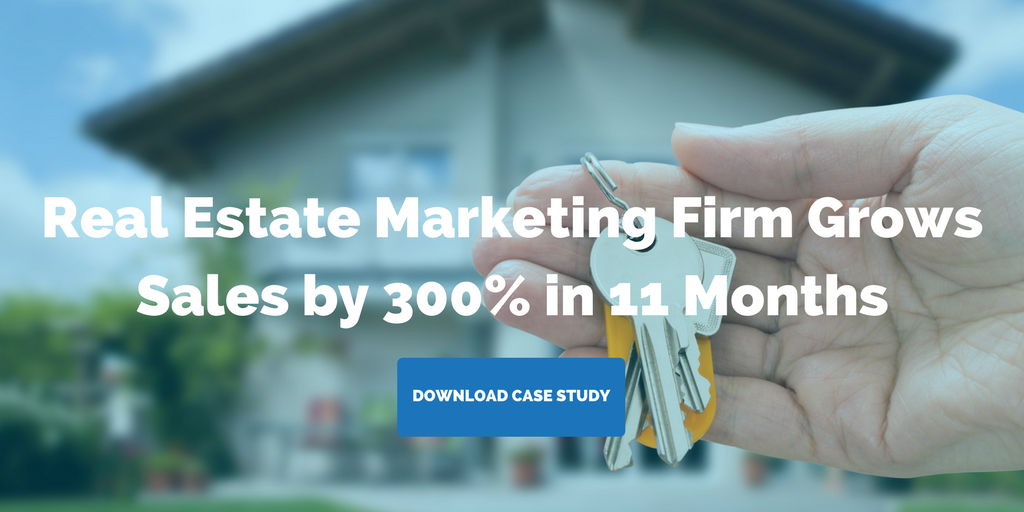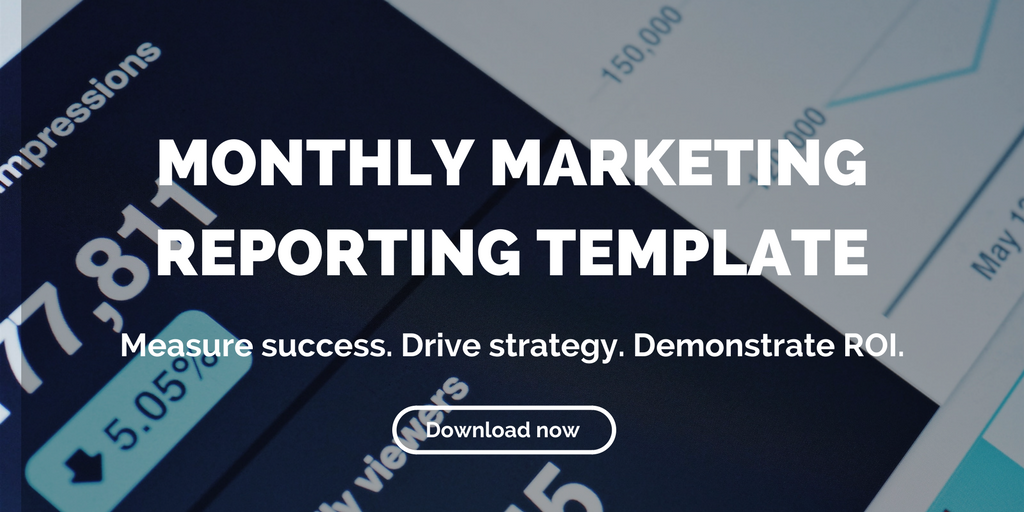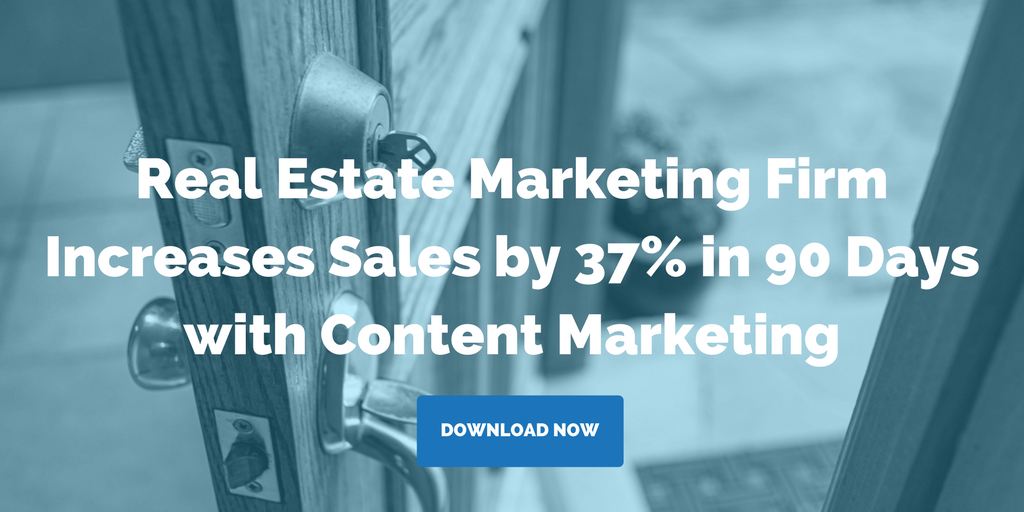Archive for the "Social Media" Category

Good Real Estate Marketing Gets Personal
Personal, emotional marketing messaging is one of the most effective ways to reach prospective buyers, particularly when it comes to real estate.
Investing in real estate is one of the most momentous personal decisions a buyer will make. So it makes sense that real estate marketers need to connect with buyers on a personal level to be effective. But, really, marketing in all industries and sectors needs to “get personal” to move prospects to profitable customer action.
Modern marketing is moving away from what Tech Crunch calls the “impression-centric paradigm,” in which the cost of media drives a campaign. And it’s moving toward a “user-centric paradigm,” in which marketers fully consider the consumer at the point of contact with the product. That’s fancy jargon that essentially means that companies are learning as much about target buyers as possible, then figuring out what will draw the most emotion from a person with that particular profile.
What information does your organization have about potential buyers? What information can you draw from social media (social prospecting)? Bring the two together, and begin crafting messaging for that persona. That’s pretty potent stuff.
The personal story
Particularly with buyers in the digital space, personalized, emotional messages attract the most attention. Think about messages that stuck out to you last time you browsed social media or various news and media outlets. My guess is that they touched you on a personal level.
To foster a connection with potential buyers through marketing, real estate marketers should use this knowledge to their advantage. Get personal with your messaging and creative. Real estate marketing lends itself to this kind of narrative — places can have powerful, engaging stories that can capture the hearts and imaginations of prospects.
Friends and neighbors
Emotional, personal narratives aren’t the only ways to reach potential buyers. One of the most important sources of spreading real estate brand awareness is peer-to-peer recommendation. Staying engaged with your social media audiences — and the conversation surrounding your brand and properties — is a great way to encourage this kind of referral.
After all, social platforms are at heart networks, meaning that any interaction you have with a follower will be seen by that person’s network. Show that you’re not some faceless building or property. If you can foster positive personal relationships with followers on social media, their networks will bear witness. And they’ll be left with a positive impression of your properties and brand.
Real estate is ideal for personal marketing. Know your buyers and tenants, and start to get personal. You’re sure to see results.
Related posts:
-
Social Media Can Be a Strategic Weapon in Real Estate Marketing
-
When Traditional Real Estate Marketing Methods Stop Working, Try Digital Marketing
-
Learn How Content Marketing Increased Real Estate Sales by 37% in 90 Days
Archive for the "Social Media" Category

Social Media Can Be a Strategic Weapon in Real Estate Marketing
Real estate marketers should embrace social media as a strategic tool for brand positioning, reputation management, and market intelligence.
Is your business cheating itself out of a major marketing advantage? It’s all too common for companies in the real estate industry to be stuck in traditional marketing methods that don’t reflect how modern buyers and tenants are searching for properties: online.
The real estate industry is built on relationships, partnerships, cooperation, networks, and communication. Being social is a key part of forging a successful real estate marketing strategy. It’s time for the industry to embrace the tools that social media platforms offer.
In addition to starting their searches online, buyers and tenants often write reviews about properties and agents online on social media sites and user-review sites like Yelp. Increasingly, your prospects will evaluate you based on what they read on sites like this.
So what can you do to leverage these resources? Real estate marketers can meet buyers and tenants where they are by using social media as a tool for brand awareness, lead generation, reputation management, and market intelligence.
4 ways to use social media as a strategic weapon in real estate marketing
Here are four ways you can make social media a strategic weapon for your business or property.
1) Distribute content and communicate
Social media is a natural way to communicate news and updates with your followers. Distribute your content as well as third-party curated content to share information with them. You’ll establish your brand as a valuable resource and enhance your property’s position within the marketplace by doing so.
2) Gain market intelligence
Potential buyers and tenants are online, sharing news and information with friends, colleagues, and — it turns out — you! So are your competitors, brokers, potential business partners, and important people in the community that have influence over various aspects affecting your property. There’s lots of valuable information that you can mine from social media. Use it to your advantage.
3) Control the conversation
Something people are talking about online? You and your property. Be an active participant in that conversation as a means to facilitate reputation management and to promote good customer service.
4) Listen and respond
Relatedly, taking the extra step of reading and responding to comments, posts, and reviews is what really makes social media such a valuable tool for the real estate industry. This way, you engender lasting and meaningful relationships with your buyers or tenants — and there’s no better way to build your brand and grow business than that.
Related posts:
- This Is How Often Real Estate Companies Should Post on Social Media
- When Traditional Real Estate Marketing Methods Stop Working, Try Digital Marketing
- 5 Tips for Building a Successful Real Estate Social Media Marketing Program
Archive for the "Social Media" Category

How Pay-Per-Click Helped This Property Get 54 Leads
Property X also saw web traffic grow by 180% in 90 days by using Google AdWords and Facebook Ads.
Sometimes our clients can be a little hesitant to try pay-per-click advertising. Take Property X, for example.
Property X’s target customer fits a very particular profile, in terms of geography, income, and age. Because of those specific demographics, and because the price point of the property was quite high, the client was not confident that a pay-per-click advertising campaign would be an effective way to reach those target customers. But we thought differently.
When paired with a content marketing program, pay-per-click can be one of the cheapest, in terms of cost-per-lead, and most efficient ways to reach a target audience. Thus, we convinced Property X to try PPC on a trial basis, investing just a small budget.
We developed a strategy for the client, using Google AdWords and Facebook Ads. Over the course of 90 days, the results were phenomenal.
A few key results:
- Property X acquired 54 leads.
- Traffic from paid search grew by 180%.
- The lead-to-customer conversion rate was nearly 3x the industry standard.
Needless to say, Property X will be expanding the use of pay-per-click advertising in the future.
How can pay-per-click help your property?
PPC can seem intimidating to the novice. But, when done right, it can be a highly effective way to reach the very specific kind of buyer or tenant your property is looking for. It helps build brand awareness and generate leads, but it also can serve as a constant reminder to buyers or tenants considering your property.
A little bit of know-how can be all the difference. Partnering with a third-party firm to help you navigate the many pay-per-click and social advertising options will help you ensure you’re getting the most bang for your buck and that your messaging and user experience is consistent across all channels.
Related posts:
-
5 Tips for Building a Successful Real Estate Social Media Marketing Program
-
Learn How Content Marketing Increased Real Estate Sales by 37% in 90 Days
-
Using Content Marketing to Market and Sell Luxury Real Estate
Archive for the "Social Media" Category

This is How Often Real Estate Companies Should Post on Social Media
Remember these best practices when deciding how often your company or property is going to post on each of these social media platforms.
Creating engaging, relevant content in a strategic and consistent manner raises brand awareness for your property and drives sales. But as BuzzFeed’s Jonathan Perelman said, “Content is king, but distribution is queen and she wears the pants.”
It’s not enough to just create interesting and pertinent content; you have to put it out there to reach your target buyer or tenant. Moreover, the content needs to be delivered consistently over time, at the right time, and in the right place.
With social media networks changing daily, it’s hard to keep up with where to distribute content, much less how often. Countless studies have attempted to solve the social-media-frequency equation. And while audiences vary across price points and regions, best practices give us some general guidelines.
Here’s our assessment of social media posting frequency.
How often to post on social media
Twitter: 40 per day*
*Big caveat here: 40 tweets per day is what we’ve found works for us and most of our clients. Let me explain.
Socialbakers suggests that posting to Twitter three times per day is the ideal frequency for brands. Buffer posts to Twitter 14 times per day. Fronetics, our supply chain brand, happens to tweet 40 times per day. So recently, after seeing the Socialbakers and Buffer stats, we conducted a month-long experiment to see how dropping our posting frequency closer to their benchmarks would affect our engagement.
As we’ve written about before, it wasn’t pretty. We confirmed that our engagement, web traffic, lead generation, and other key performance indicators are at optimal levels when we tweet 40 times per day.
Your company, or your marketing partner, should conduct due diligence and determine what the right frequency is for your business. For Fronetics Real Estate, we’re currently tweeting 6-10 times a day, working up to more as we are able. The strategic growth of your social media program is also an important element to consider when determining a posting frequency that’s best for your company or property.
Facebook: 1 per day
Most companies find that posting 1 time per day is their sweet spot for most social media networks. Facebook is no exception: The network’s algorithm values quality over quantity, so the more engaged your followers are with your content, the more likely they are to see your posts. This also means that posting content that does not facilitate engagement can actually decrease the likelihood that followers will see your posts.
One sure way to encourage disengagement is by overwhelming your audience. We all have that friend or company we follow that posts too much — don’t be like that person.
Remember that the lifespan of a Facebook post (about 5 hours) is significantly longer than that of a tweet. So you don’t need to provide a constant stream of content to get your audience’s attention. Your focus should be distributing the most relevant, interesting content you can, at a time when most of your audience will be on Facebook.
Instagram: 1-2 per day
There’s an unwritten rule among Instagramers that a user shouldn’t post more than once per day. We generally agree for the same reason we don’t think brands should post more than once a day to Facebook: Don’t overwhelm your audience because the lifespan of your posts is pretty long. In fact, a Union Metrics study found that many Instagram posts continue to receive engagement for days — even weeks — after posting.
Most brands end up posting 11-20 posts per month. If you focus on compelling images with strategic messages, that’s probably a good benchmark to stick with. It’s important to note, however, that another Union Metrics study suggests posting consistency is more important than frequency. Again, taking the time to test the Instagram posting frequency that works best for your business is a worthwhile endeavor.
LinkedIn: 1 per workday or less
A more formal and technical social media network, LinkedIn is a platform for business-related content. But users also seek information about potential investments and market information — and that is where your opportunity lies.
Consider posting on LinkedIn only during the workweek, or even less. To provide the most value for your LinkedIn followers, content should be less promotional and more heavily focused on market trends and insights. Followers will come to consider your company or property as a go-to resource about the real estate market, local amenities and attractions, and investment opportunities.
At the end of the day, optimal posting frequency for your company or property rests heavily on the audience you want to reach. Experimenting with different social media networks and posting frequencies will give you greater insight into your ideal distribution approach. With these best practices as a guide, let your own analysis be your guide. Maintaining a dynamic and fluid posting strategy will ensure that your social efforts drive followers to action, rather than drive them away.
Related posts:
-
When Traditional Real Estate Marketing Methods Stop Working, Try Digital Marketing
-
6 Signs It’s Time to Consider Outsourcing Your Real Estate Marketing
-
5 Tips for Building a Successful Real Estate Social Media Marketing Program
Archive for the "Social Media" Category

5 Tips for Building a Successful Real Estate Social Media Marketing Program
Social media marketing in real estate isn’t just about earning followers; it’s about building relationships.
Social media is an excellent tool for real estate marketers, developers, and property managers for many reasons. You can communicate with residents/tenants, build brand awareness, gain market intelligence, and even identify prospective tenants or buyers.
Particularly if the latter is your focus, it’s easy to celebrate every follower you earn as a marketing success. But it’s important to remember that a social media follower doesn’t necessarily equal a buyer/tenant. After all, participating in social media is not only about earning a large following; it’s about building relationships with those people.
An article published in Entrepreneur says it best: “Content equals marketing; conversation equals a relationship.” Using social media to converse with people and form relationships is what will ultimately drive sales and increase retention.
This is particularly important as younger generations gain buying power. That’s because research shows millennials, in particular, increasingly prefer communicating with brands via social media rather than via phone or email. As you are probably well aware, they aren’t afraid to take to social networks to report a problem or complaint. Your property needs to be using social networking as a conversation platform in order to form meaningful business relationships with these prospects.
So you can’t just distribute content via your social media accounts and expect the followers to start rolling in — and then for those followers to turn into buyers or tenants. Here are some tips for building relationships through real estate social media marketing.
5 ways to build relationships through real estate social media marketing
1) Be the person representing a brand.
Represent your company, but be a real person to whom your prospects or residents/tenants can relate. Do not appear as a brand who is a person; show up as a person who has a brand.
2) Be a real person.
Be personable and real. Open yourself up to conversations that show a bit of the real you. Nothing builds a relationship better than making a genuine connection. In other words, be a real person, not a personality.
3) Show who you are.
In addition to sharing information related to your property, don’t be afraid to sprinkle in a bit of what matters to you in your posts. Photos of bring-your-child-to-work day, pets who regularly visit the office, or even your extra-large coffee during a particularly busy week tell a story that your followers can relate to. These kinds of things are excellent starting points for conversation!
4) Show that you care.
To build a relationship of trust, people need to feel that you care about what is important to them. Go beyond just liking, retweeting, or leaving an encouraging message on your followers’ posts. Actually put yourself out there and respond, invite dialog, and demonstrate that they are someone you value.
5) Be a regular.
Show up on a regular basis to interact with your audience and answer questions. And make sure to respond quickly when someone reaches out to you. Don’t underestimate the power of being there when a customer needs you or has a problem to report.
Related posts:
- Learn How Content Marketing Increased Real Estate Sales by 37% in 90 Days
- Real Estate Firm Grows Sales by 300% through Content Marketing
- Using Content Marketing to Market and Sell Luxury Real Estate
Archive for the "Social Media" Category

Using Content Marketing to Market and Sell Luxury Real Estate
Luxury real estate firms use content marketing and social media to carry the lifestyle brand they’ve built around their properties into the online world.
In real estate sales, you want people to find your properties, like what they see, and ultimately be moved to purchase. In other words, you want to attract visitors, convert visitors to leads, and convert leads to deals. Innovative luxury real estate firms are finding ways to leverage digital tools to guide more buyers down that path to purchase.
Without a doubt, luxury real estate buyers are a diverse bunch. “One day I have to know all about feng shui, and the next I have to be able to talk to a pig farmer from Iowa,” says one luxury real estate sales executive. “I’m like a chameleon.”
And luxury buyers are trending even more heterogeneous — both geographically and demographically. What’s more, they are more connected than ever before due to the proliferation of digital technologies that enable buyers and properties to connect with one another in new and different ways.
Digital marketing’s role in luxury real estate sales
It’s clear that technology is a strategic way for properties to get in front of more potential buyers. Moreover, it creates competitive opportunities for luxury real estate firms that are prepared to adapt to this new landscape.
Many luxury real estate firms are already using digital and social media to carry the lifestyle brand they’ve built around their properties into the online world. With the use of inbound or content marketing — think of it as the intersection of valuable content, social media, and lead generation — they are creating new virtual “touch points” to connect with affluent, hyper-connected luxury buyers.
What we know about luxury buyers is that they are likely to do purchasing research online. They are influenced by peers and their interactions with websites, mobile apps, and social networks. We also know that 93% of all online experiences begin with a search engine, and that 75% of searchers don’t move past the first page of search results. Through publishing relevant, quality content, content marketing gives luxury real estate marketers the tools needed to make certain their properties are being found online.
Social media and real estate
According to Sprout Social’s Consumer Engagement Index, which ranks industries by which ones receive the most engagement from customers on social media, the real estate industry is second overall in terms of inbound engagement relative to audience size. But how exactly, are real estate firms using content marketing to sell luxury properties?
The majority of real estate firms, through the use of social media and blogs, are seeking to draw visitors to a property’s website. Others are putting social media to use for functional purposes, such as communicating real-time updates to potential buyers about project timelines or changes in sales office hours.
Content marketing gets results
Of their recent content marketing efforts, the New York City-based Corcoran Real Estate Group says they have realized significant benefits. A spokesperson for the company says, “The main thing we’ve seen is that the quality of the referral traffic back into our main website has significantly improved. And not only are we seeing more traffic coming in, but visitors coming in from social media sites are staying longer and looking at more things — something we had also seen with search engines, but not in such large numbers.”
Corcoran isn’t alone in their use of emergent technology and social media strategy to ensure maximum exposure for their luxury properties. Long & Foster’s Luxury Homes e-magazine showcases luxury properties through an extensive online campaign targeting luxury clients. The online campaign drives traffic to the e-book and the website. Similarly, residential homebuilder Polygon Homes currently connects their available luxury properties to over 6,000 people through a multitude of social media platforms. The company’s social followers are linked to relevant articles, outside press coverage, and traditional marketing resources that serve to build on the lifestyle brand of each property.
Real estate firms are also recognizing value in blog content as way to attract visitors and nurture leads. For example, One Riverside Park, a New York City building with luxury condo units for sale, uses its blog to highlight not only their property, but also additional relevant information such as neighborhood amenities, seasonal local weather, and area restaurants.
Boston is experiencing a substantial upsurge in construction of high-end luxury residential units. And local real estate firms are using content marketing to sell those luxury units.
Seventy percent of the luxury units at the 60-story Millennium Tower under construction in Boston’s Downtown Crossing neighborhood have been sold. Millennium Partners, the firm responsible for the marketing and sales of the luxury units, has embraced content marketing as part of their overall marketing strategy. Millennium Tower’s Facebook page not only shares construction progress, sales information, and related press coverage, but neighborhood amenities, industry trends, and an array of visual content that’s more often than not shared widely by followers.
Building a data-driven strategy
Beyond increased prospect engagement and driving more traffic to their websites, other firms are using content marketing as a way to gauge market reception of traditional print marketing materials and the general perception of properties. Knowing what resonates online through focus group-like participation is valuable information that marketers are finding bolster their offline marketing efforts.
In that same vein, while real estate marketers are realizing value from creating and sharing content, they’re also recognizing the importance of analytics and measurement.
Real estate marketers are using content marketing metrics to determine what type of content is inspiring current customers and pulling in new leads. These firms are looking at how their online numbers compare daily, weekly, and monthly and planning content accordingly. Specifically, they’re monitoring measurements like page views, video views, document views, content downloads, and social conversations. They’re examining how sales are impacted by social media and digital content by tracking metrics such as referrals from Facebook, Twitter, Pinterest. Knowing all of these metrics allows for a more nimble real estate marketing strategy — one that’s able to rapidly adapt and engage potential buyers in real time.
Content marketing is a new approach to an old strategy — one that’s putting real estate marketers in charge of the way potential buyers interact with their properties.
These marketers are guiding prospects down the road of purchase through lead generation campaigns, capturing emails and other contact information through blog subscriptions and form completions for content downloads. They’re strengthening branding efforts for their properties by building robust online social communities and employing previously untapped sources of referrals. And real estate marketers who use content marketing are seeing their properties rank higher in search engine results pages, experiencing a steady increase in their website visitors, and increasing conversion rates of leads and sales.
Taking into consideration the changing demographics and increased digital connectedness of luxury real estate buyers, firms that seek to broaden the reach of their marketing efforts through new and emergent technologies will aggressively position themselves as strong competitors in an increasingly competitive luxury property market.
Related posts:




